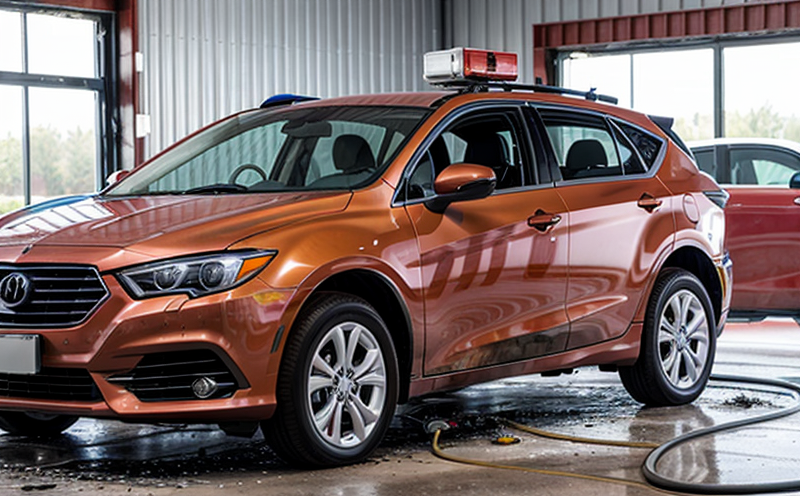Fire Resistance Testing of Automotive Seat Frames
The fire resistance testing of automotive seat frames is a critical aspect of ensuring passenger safety during vehicle fires. Fire incidents in vehicles are rare; however, when they do occur, the integrity and structural stability of the seating system can significantly impact occupant safety. This test evaluates how well the seat frame withstands exposure to intense heat and flames without compromising its structural integrity or releasing harmful fumes.
The process typically involves subjecting a representative specimen of an automotive seat frame to controlled fire exposure in accordance with international standards, such as ISO 6943-1. The test setup includes a furnace that simulates real-world fire scenarios, including temperature and duration. Specimens are placed inside the furnace where they undergo specified time durations under specific temperature conditions.
During testing, engineers monitor key parameters like the frame’s structural stability, deformation levels, and smoke production. Compliance with standards ensures that automotive seat frames meet rigorous safety requirements set by regulatory bodies worldwide. This helps prevent potential hazards in case of a fire, thereby enhancing occupant protection during emergency situations.
The test results provide essential data for quality assurance teams responsible for ensuring product reliability and compliance across various stages of development. By incorporating robust testing protocols into the design phase, manufacturers can identify weaknesses early on, leading to improved product performance and reduced risks associated with vehicle fires.
Moreover, this type of testing supports broader industry efforts aimed at improving fire safety standards in vehicles. As automotive technology continues evolving towards more electrified systems, understanding how these changes affect material behavior under extreme conditions becomes increasingly important. The insights gained from such tests play a crucial role in shaping future design decisions and regulatory frameworks.
Finally, it is worth noting that beyond mere compliance with regulations, fire resistance testing also contributes to overall vehicle safety by promoting innovation within the industry. By pushing boundaries through rigorous experimentation, manufacturers can develop safer products while maintaining competitive advantages in terms of performance and durability.
Why It Matters
The importance of fire resistance testing cannot be overstated when it comes to automotive seat frames. In the event of a vehicular fire, the structural integrity of the seating system plays a vital role in protecting occupants from injuries caused by collapsing structures or ejected parts. Ensuring that these components can withstand high temperatures without failing is essential for maintaining passenger safety.
Furthermore, this testing helps reduce risks associated with toxic smoke emissions during fires. When exposed to flames, certain materials used in automotive seats may release harmful gases into the air, posing additional dangers beyond structural failure alone. By conducting thorough fire resistance tests, manufacturers can identify potentially hazardous substances early in the design process and replace them with safer alternatives.
From an environmental perspective, reliable fire resistant seat frames contribute positively towards sustainability goals by minimizing waste generation during accidents or end-of-life disposal processes. Durable components that do not break down easily under extreme conditions require fewer replacements throughout their lifecycle, reducing resource consumption and landfill pressures.
Environmental and Sustainability Contributions
Reduces the amount of waste generated during fires by ensuring structural integrity.
Promotes the use of non-toxic materials through rigorous testing protocols, thereby minimizing environmental impact.
Encourages recycling and reuse of components following accidents or end-of-life disposal.
Use Cases and Application Examples
Ensuring compliance with international standards such as ISO 6943-1 for fire resistance testing.
Evaluating the performance of seat frames under various temperature and duration conditions during simulated fires.
Identifying potential weaknesses in design that could lead to structural failure during vehicular fires.
In addition to these specific applications, fire resistance testing also supports broader industry initiatives focused on improving overall vehicle safety. By incorporating this critical step into the development process, manufacturers can enhance product performance while maintaining competitive advantages in terms of durability and reliability.





